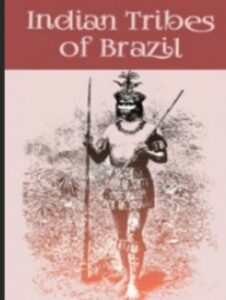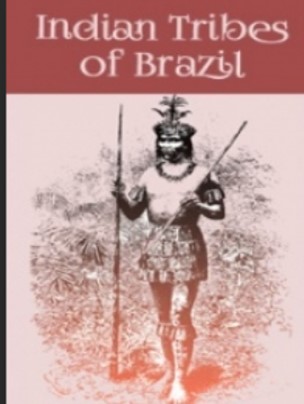INDIAN TRIBES OF BRAZIL
Author: Bassam Imam

INDIAN TRIBES OF BRAZIL – The pre-colonization process of what was later to become the nation of Brazil commenced on April 22, 1500. A fleet of 13 ships containing more than 1000 men under the command of Pedro’ Alvares Cabral anchored off the mouth of the Rio Buranhem on the Bahia coast.
The men would stay anchored in what they called ‘Porto Seguro’ for 9 nine days. The name Brazil would later be derived from ‘pau Brazil’ a red dye wood that was a major export in the region.
Cabral was born in Belmonte, Portugal in 1467 or 1468 and died in 1520. He was a commander, voyager, explorer, and son of a nobleman. Although he initially thought he had come upon a large island he later contemplated the possibility that it was a continent.
Cabral had been on an expedition-voyage with the primary purpose of finding a western route to India. As fate had it, his fleet of ships was blown off course by a powerful storm.
Believing the land to be within the domain of Portuguese influence, he claimed possession of the territory in the name of and on behalf of King Manuel 1, ‘justified’ by The Treaty of Tordesillas. A ship was sent back to Portugal for the purpose of informing the king.
The philosophy of the times regarding natural right to conquest of savage or pagan lands was formally initiated by The Doctrine of Discovery.
The Doctrine of Discovery derived from the Papal Bulls of the 15th century which granted {European} Christian explorers the legal right to assert ownership of those lands on behalf of and for their Christian Monarchs. Lands that were inhabited by Non-Christians could be discovered, laid claim to, and utilized for
whatever purposes. If the (unbelievers) pagans in these lands could be converted, they may be spared. If not, they could be enslaved and/or killed.
Below are 2 examples pertaining to the philosophy of the colonialists in the Americas. The first quote pertains to France’s use of The Doctrine of Discovery to lay absolute claim to Mi’kmaq land (christened Acadia).
The second quote is from Bartolome’ de Las Casas regarding the Spanish Colonists’ treatment of the Indians:
“The earth pertaining, then, by divine right to the children of God {Christians}, there is here no question of applying the law and policy of Nations, by which it would not be permissible to claim the territory of another. This being so, we must possess it and preserve its natural inhabitants, and plant therein with determination the name of Jesus Christ, and of France.” (Marc Lescarbot, 1618; Danielpaul.com).
“The reason the Christians have murdered on such a vast scale and killed anyone and everyone in their way is purely and simply greed. . . . Their insatiable greed and overweening ambition know no bounds; the land is fertile and rich, the inhabitants simple, forbearing and submissive.
The Spaniards have shown not the slightest consideration for these people, treating them (as I Bartolome de Las Casas have personally witnessed from the beginning) not as brute animals – indeed, I would to God they had done and had shown them the consideration they afford their animals – so much as piles of dung in the middle of the road.
They have had as little concern for their souls as for their bodies, all the millions {of Indians} that perished having gone to their deaths with no knowledge of God and without the benefit of the Sacraments.
One fact in all this is widely known and beyond dispute, for even the tyrannical murderers themselves acknowledge the truth of it: the indigenous peoples never did the Europeans any harm whatever; on the contrary, they believed them to have descended from the heavens, at least until they or their fellow citizens had tasted, at the hands of these oppressors, a diet of robbery, murder, violence,{countless rapes, torture} and all other manner of trials and tribulations.” (Historia de las Indias, written by Bartolome’ de las Casas)
As noted by Pero Vaz de Caminha the chronicler of Cabral’s voyage, soon they saw a group of 20 nude, dark-skinned men and around them was very lush green vegetation. By the time a small boat had reached the shore these men had assembled therein. They had already laid down their bows and arrows, by any day’s standards this act, was a sign of peace, friendship, and goodwill. If they had only known what was in store for them and the rest of the indigenous peoples of the continent and hemisphere.
Paleo-Indians had been in South America for more than 10 thousand years. A new people would conquer the entire area. Prior to the arrival of Europeans many Indian tribes in the area lived in semi-nomadic communities.
In the decades to come there was a scramble for land, natural resources, and slave labor in the region. France and Spain would challenge Portugal’s claim to the vast territory. On a broader plain extending throughout the Americas the British and to a lesser extent the Dutch joined the scramble, or should I call it a ‘sharks feeding frenzy’?
The idea of enslaving the indigenous population didn’t take long to take hold in Portugal. At the time Portugal’s population was estimated at 1 million. Lisbon the capital of Portugal would soon contain many Brazilian Indians and African slaves. The extraction of goods from the lands to use in commerce brought treasure troves to Portugal and the other colonial powers of the day.
Absolutely no consideration was given to the indigenous inhabitants of these vast lands. This attitude would prevail for centuries-on-end and continues to this day in the entire Hemisphere of the Americas and elsewhere.
The indigenous people therein were in the past treated like animals, animals that had no rights to their lands or the natural resources. By far the worst and most devastating catastrophe resulted by the introduction of new diseases the Indians had absolutely no immunity to and fatal epidemics.
The common cold, flu, measles, smallpox, dysentery, malaria, typhoid, tuberculosis, hepatitis, alcoholism (occurred later), enslavement (many Indians therein and in bordering countries were literally worked to death), transfer of tribes sometimes to barren lands, encirclement of territory by hostile non-Indians (a reservation-type system), and the loss of lands and the game, fish, medicines therein, land invasions (also including numerous illegal entries into demarcated Indian territories), squatters, and also the rubber and plastic extraction industries, logging, and Brazil nut industries, culture and language devastation, and racism, discrimination, belittling, demonization, and also paternalism by governments that often-times supported or caved in to the demands of the dominant society (cattle ranchers, rubber and mineral extraction industry, dam building projects, squatters, and settlers).
By no means is this a complete list of problems that would be dropped onto the heads and shoulders of the Indians of the country we now call Brazil and elsewhere.
Nevertheless, as will be detailed in this book, many Brazilian Indian tribal peoples have clung unto their cultures quite tenaciously and have strenuously fought to maintain possession of their lands. At the time of contact, and to this day in Brazil, numerous Indian tribes lived off the land, practicing hunting, fishing, gathering, and/or agriculture.
“We Indians are like plants. How can we live without our soil, without our land?”
(Marta Guarani; Survival International.org)
READ MUCH MORE INSIDE… 155 Pages
DOWNLOAD YOUR COPY NOW “INDIAN TRIBES OF BRAZIL”
Collector’s Item $39.97

Click on the Red Button Below for Instant Access!
Our 100% Money Back Guarantee:

If for any reason you decided within 30 days that “INDIAN TRIBES OF BRAZIL” isn’t for you, simply notify us by email and we’ll gladly refund your money – no questions asked. That’s our Ironclad Guarantee!
The risk is entirely ours! You absolutely have nothing to lose!
Your name and email will Never be shared, sold, or given to anyone.
We keep our subscriber’s privacy sacred. We do not sell or rent your personal information to other parties. What’s more you can always unsubscribe at any time!
Regards, Coyalita
Copyright © 2021-2024 1-Stop-Sporting-Goods.com All Rights Reserved Privacy Policy – Earnings Disclaimer – Terms of Use – Contact Us
